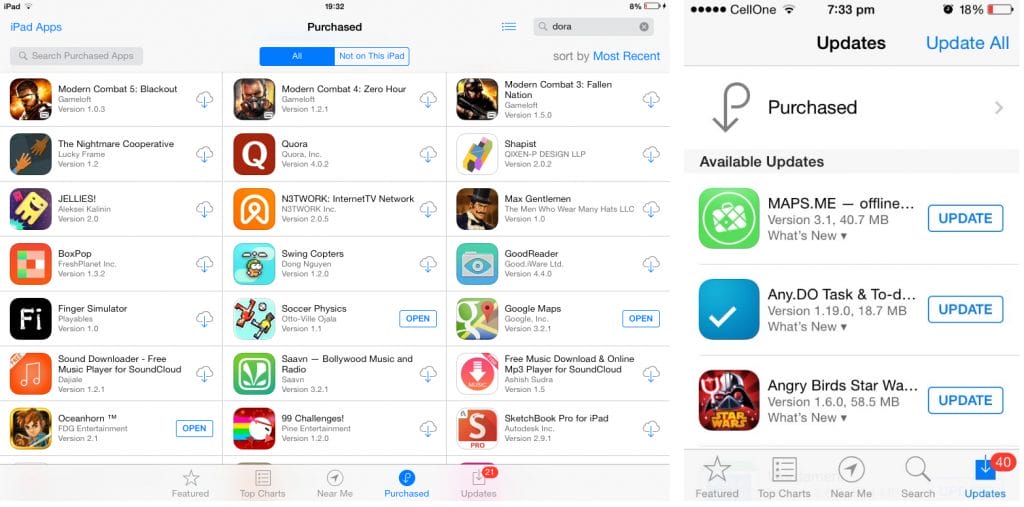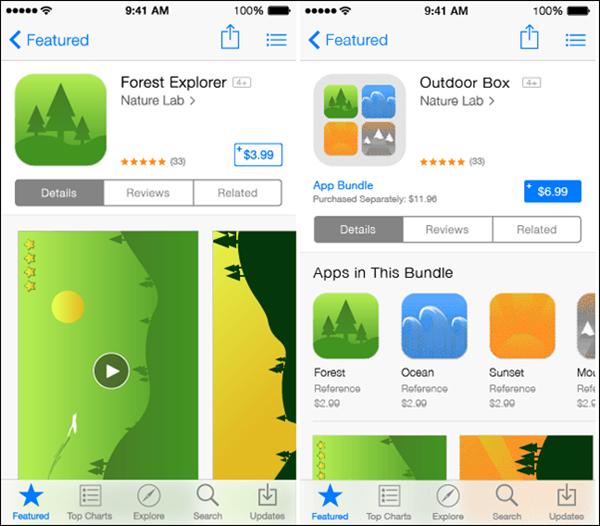
Open mediapipe/examples/ios/bundle_id.bzl, and change theīUNDLE_ID_PREFIX to a prefix associated with your provisioning profile.Ĭreate the Xcode project, and make sure you have set up either automatic or.With you own profile if you need a different profile for different apps. Since it will take precedence over the common one. Provisioning_profile.mobileprovision symlink in each example's directory, Note: if you had previously set up automatic provisioning, you should remove the Ln -s ~/Downloads/MyProvisioningProfile.mobileprovision mediapipe/provisioning_profile.mobileprovision Mediapipe/mediapipe/provisioning_profile.mobileprovision. Symlink or copy your provisioning profile to
OPEN BUNDLE FILES FOR AN APP IOS DOWNLOAD
If there are none, generate and download a profile on Apple's Previously downloaded using Xcode: open ~/Library/MobileDevice/"Provisioning Tip: You can use this command to see the provisioning profiles you have Obtain a provisioning profile from Apple.This script again to link the updated profiles. Note: once a profile expires, Xcode will generate a new one you must then run You have enabled automatic provisioning in Xcode. This will find and link the provisioning profile for all applications for which Run this command: python3 mediapipe/examples/ios/link_local_profiles.py In the terminal, to the mediapipe directory where you cloned the We have provided a script to make this easier. This generates provisioning profiles for each app you have selected. This set-up needs to be done once for each application you want to install. Select " Your Name (Personal Team)" in the Team dialog menu. Select one of the application targets, for example, HandTrackingGpuApp.Ĭheck "Automatically manage signing", and confirm the dialog. In the project navigator in the left sidebar, select the "Mediapipe" These profiles have a longer validity period andĬan target multiple devices, but you need a paid developer account withĬreate an Xcode project for MediaPipe, as discussed This uses a provisioning profile associated with anĪpple developer account. Updated often (it is valid for about a week).Ĭustom provisioning. The provisioning profile is managed by Xcode, and has to be
OPEN BUNDLE FILES FOR AN APP IOS INSTALL
This allows you to build and install an app to your

To install applications on an iOS device, you need a provisioning profile. If you get an error about bundle IDs, see the Once the project is generated, it will be opened in Xcode. You will be asked for a location to save the Xcode project. Select the MediaPipe config in the Configs tab, then press the Generateīutton below. "Bazel." button in the Packages tab and select the bazel executable in Tip: If Tulsi displays an error saying "Bazel could not be found", press the Open mediapipe/Mediapipe.tulsiproj using the Tulsi app. This will install Tulsi.app inside the Applications directory in your # cd out of the mediapipe directory, then: Xcode projects from Bazel build configurations. We will use a tool called Tulsi for generating Lets you to make use of automatic provisioning (see later section). This lets you to edit and debug one of the example apps in Xcode.

Otherwise, run this command to generate a unique prefix: python3 mediapipe/examples/ios/link_local_profiles.py If you have a custom provisioning profile, see To avoid clashesīetween different MediaPipe users, you need to configure a unique prefix for the

That lets you install an app with that ID onto your phone. git clone Īll iOS apps must have a bundle ID, and you must have a provisioning profile pip3 install -user sixĬlone the MediaPipe repository. Set Python 3.7 as the default Python version and install the Python "six" We recommend using Homebrew to get the latest versions. Install Mediapipe Framework following these instructions.Ĭommand Line Tools using: xcode-select -install To learn more about these example apps, start from, start from Hello

Follow instructions below to build iOS example apps with MediaPipeįramework.


 0 kommentar(er)
0 kommentar(er)
